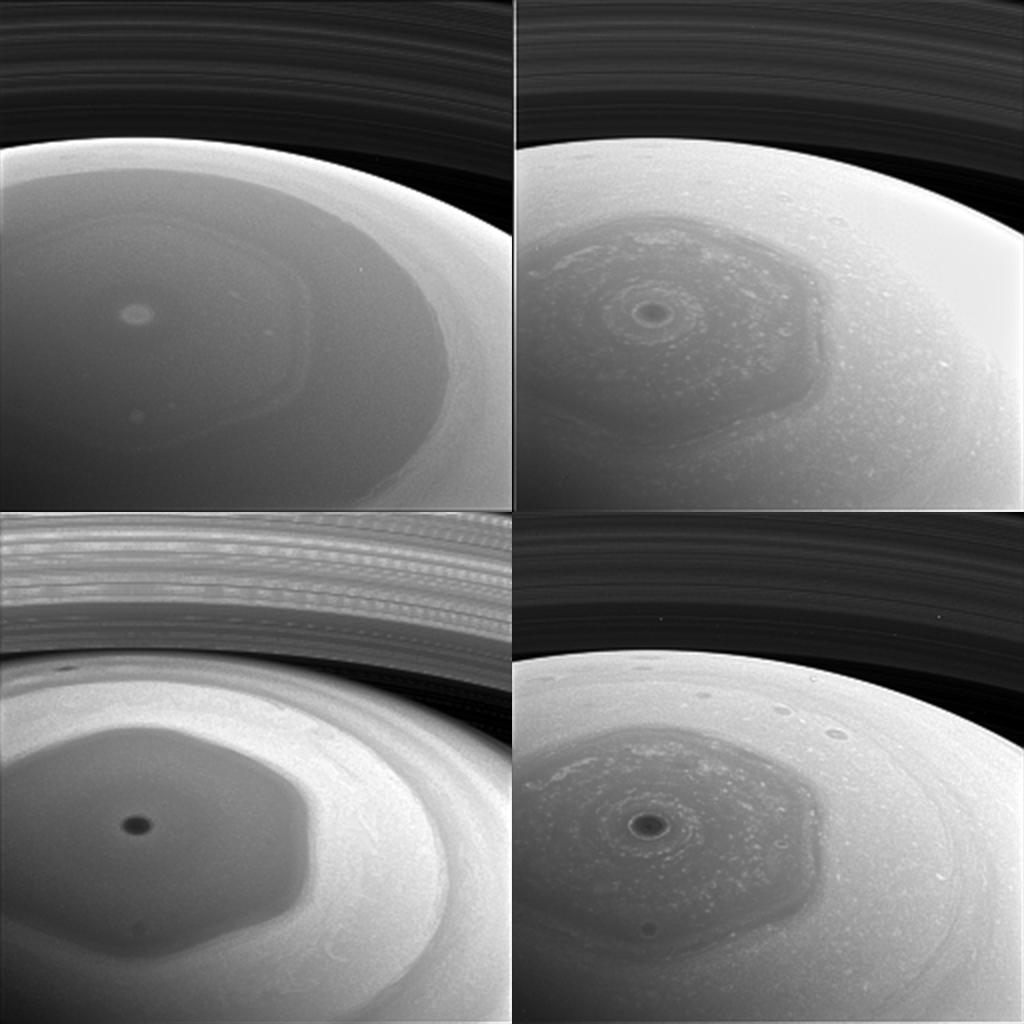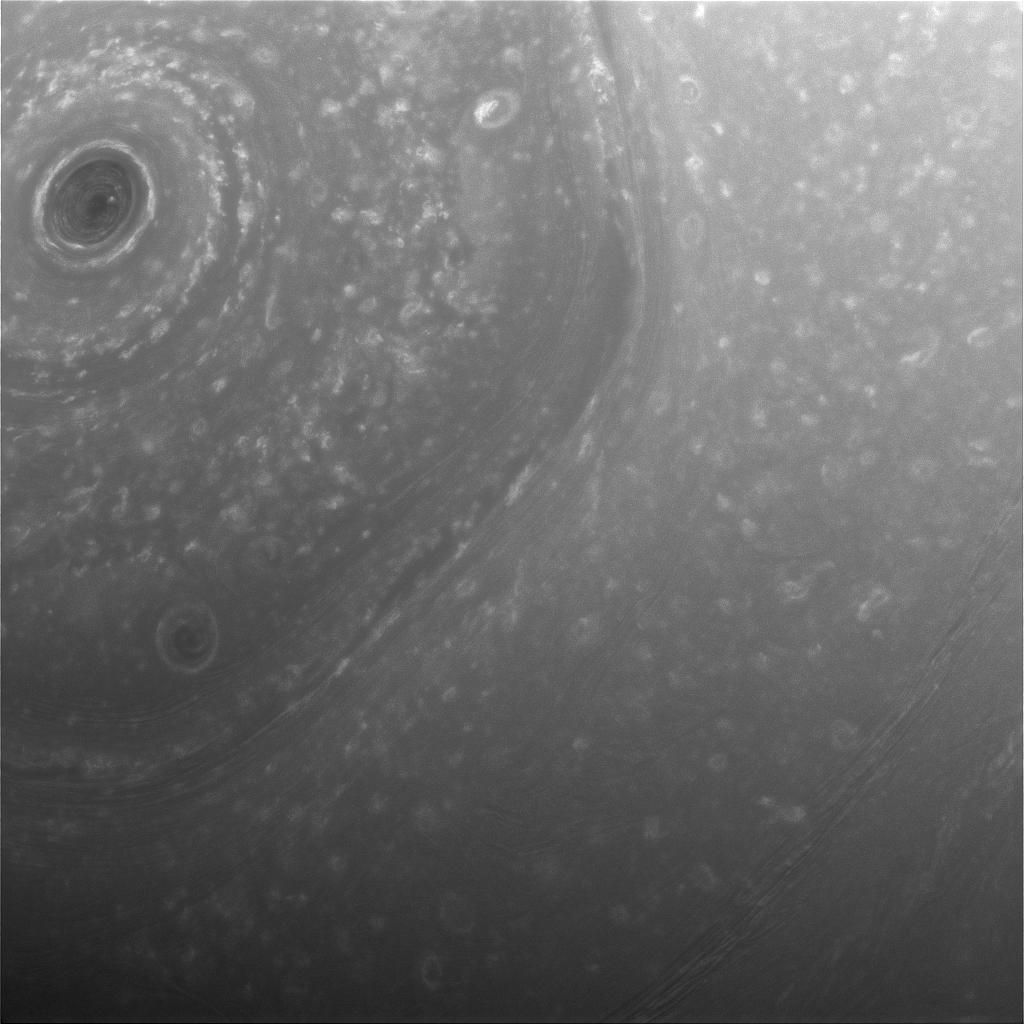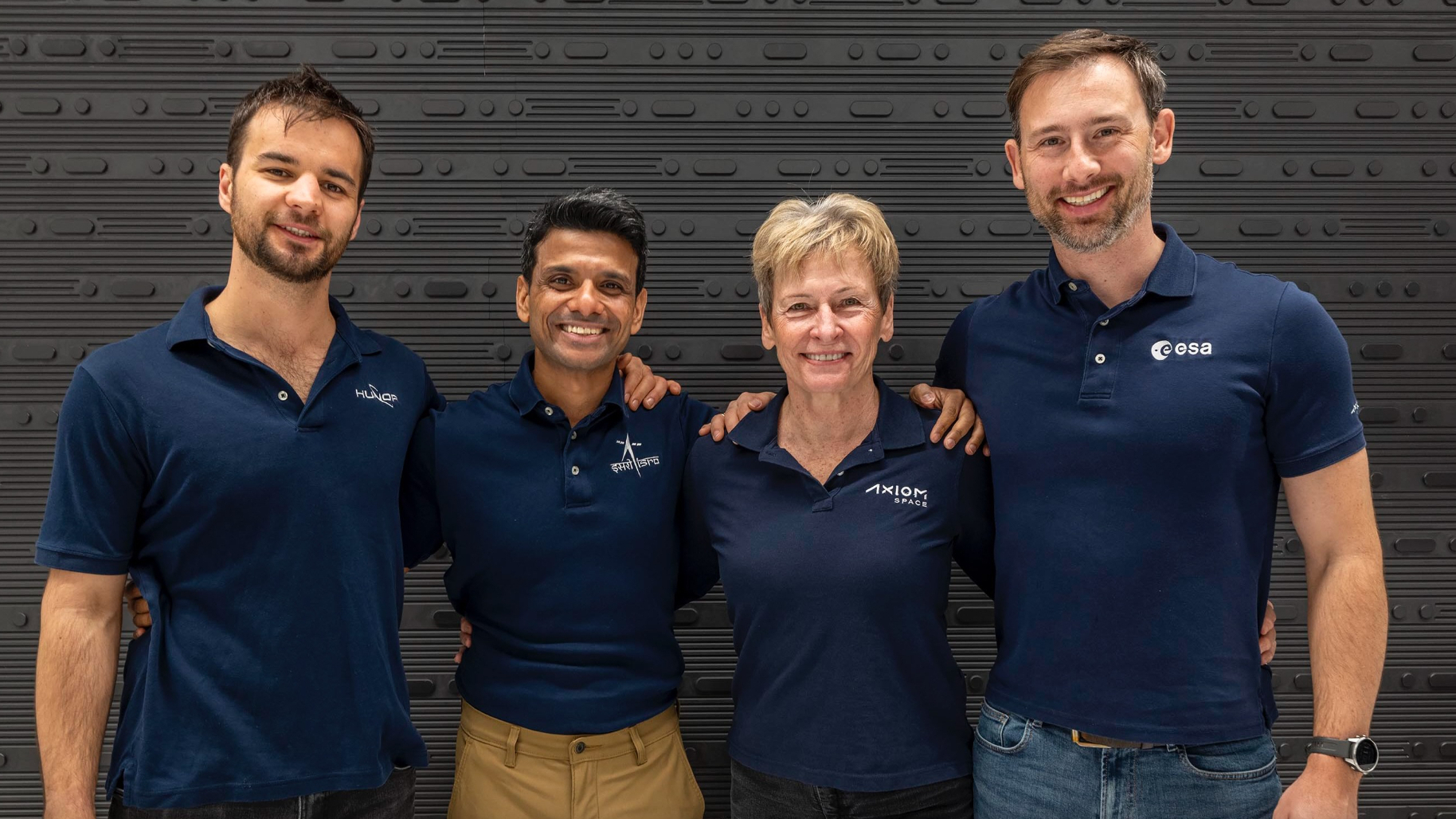
NASA's Cassini probe has beamed home the first close-up images of Saturn from the new phase of its venerable mission, and they're a doozy.
The photos — which you can check out in this Space.com video set to pulse-pounding music — show Saturn's northern hemisphere in spectacular detail, and provide multiple views of the huge, bizarre hexagonal storm that swirls around the planet's north pole.
Cassini captured the images on Friday and Saturday (Dec. 2 and Dec. 3), as the spacecraft was zooming toward a Sunday morning (Dec. 4) plunge past the outer edge of Saturn's iconic rings. This dive was the first of 20 that Cassini will perform during its "Ring-Grazing Orbits" phase, which runs through April 2017. [See More Photos of Saturn's Bizarre Hexagon]

On April 22, the spacecraft will fly past Saturn's largest moon, Titan, whose gravitational pull will reshape Cassini's orbit and set the stage for the mission's "Grand Finale." During this last act, Cassini will conduct 22 dives between Saturn and its innermost ring, whose edge lies just 1,500 miles (2,400 kilometers) from the gas giant's cloud tops.
The mission will come to an end on Sept. 15, 2017, when Cassini performs an intentional death dive into Saturn's thick atmosphere.

"This is it, the beginning of the end of our historic exploration of Saturn," Carolyn Porco, Cassini imaging team lead at the Space Science Institute in Boulder, Colorado, said in a statement today (Dec. 7). "Let these images — and those to come — remind you that we've lived a bold and daring adventure around the solar system's most magnificent planet."
The $3.2 billion Cassini-Huygens mission launched in October 1997 and arrived in the Saturn system in July 2004. The Cassini mothership carried a lander called Huygens, which touched down on Titan's surface in January 2005; the orbiter continued to circle Saturn, studying the planet, its rings and many moons.
Breaking space news, the latest updates on rocket launches, skywatching events and more!
The mission is a joint effort involving NASA, the European Space Agency and the Italian Space Agency.
Follow Mike Wall on Twitter @michaeldwall and Google+. Follow us @Spacedotcom, Facebook or Google+. Originally published on Space.com.
Join our Space Forums to keep talking space on the latest missions, night sky and more! And if you have a news tip, correction or comment, let us know at: community@space.com.

Michael Wall is a Senior Space Writer with Space.com and joined the team in 2010. He primarily covers exoplanets, spaceflight and military space, but has been known to dabble in the space art beat. His book about the search for alien life, "Out There," was published on Nov. 13, 2018. Before becoming a science writer, Michael worked as a herpetologist and wildlife biologist. He has a Ph.D. in evolutionary biology from the University of Sydney, Australia, a bachelor's degree from the University of Arizona, and a graduate certificate in science writing from the University of California, Santa Cruz. To find out what his latest project is, you can follow Michael on Twitter.
